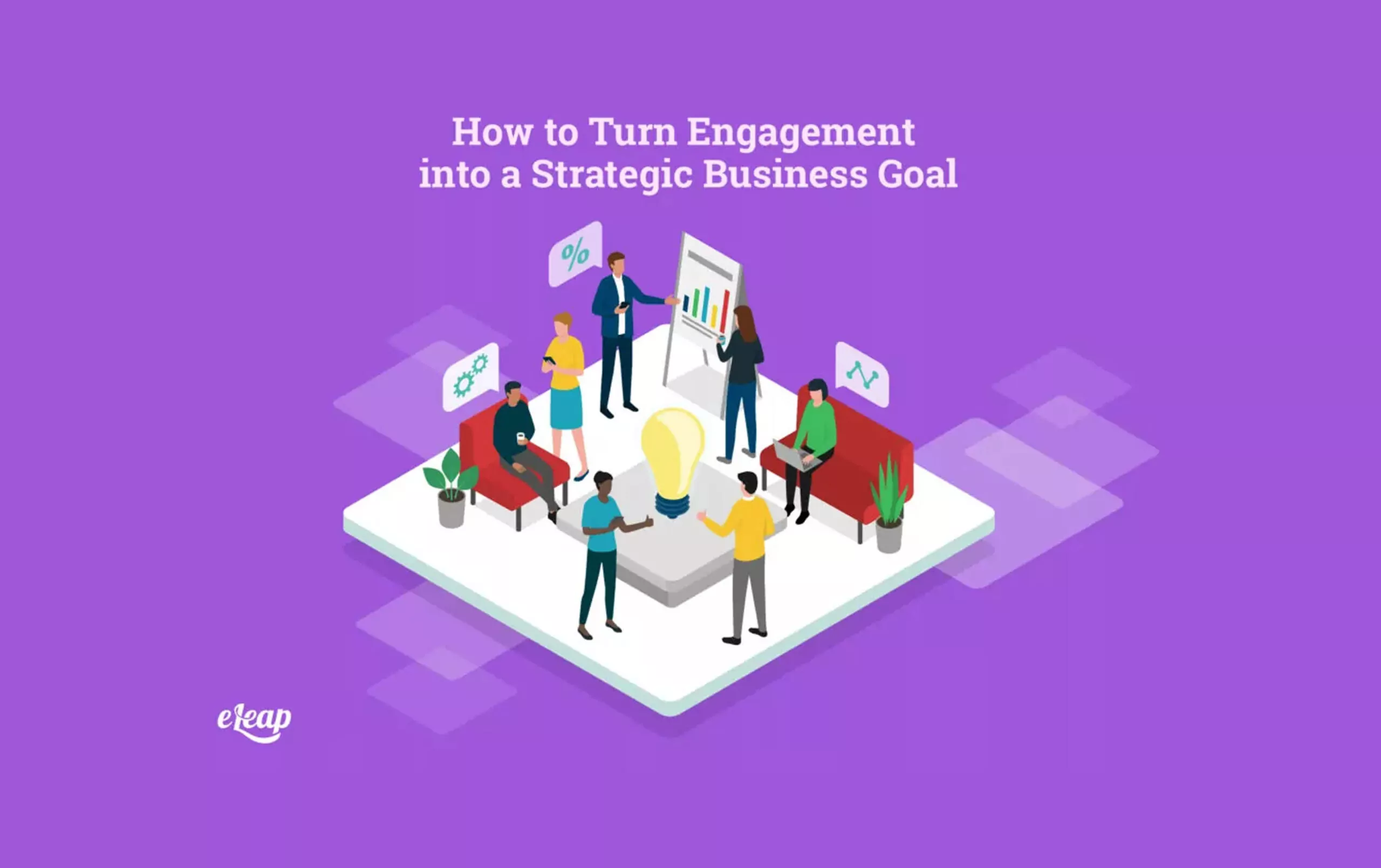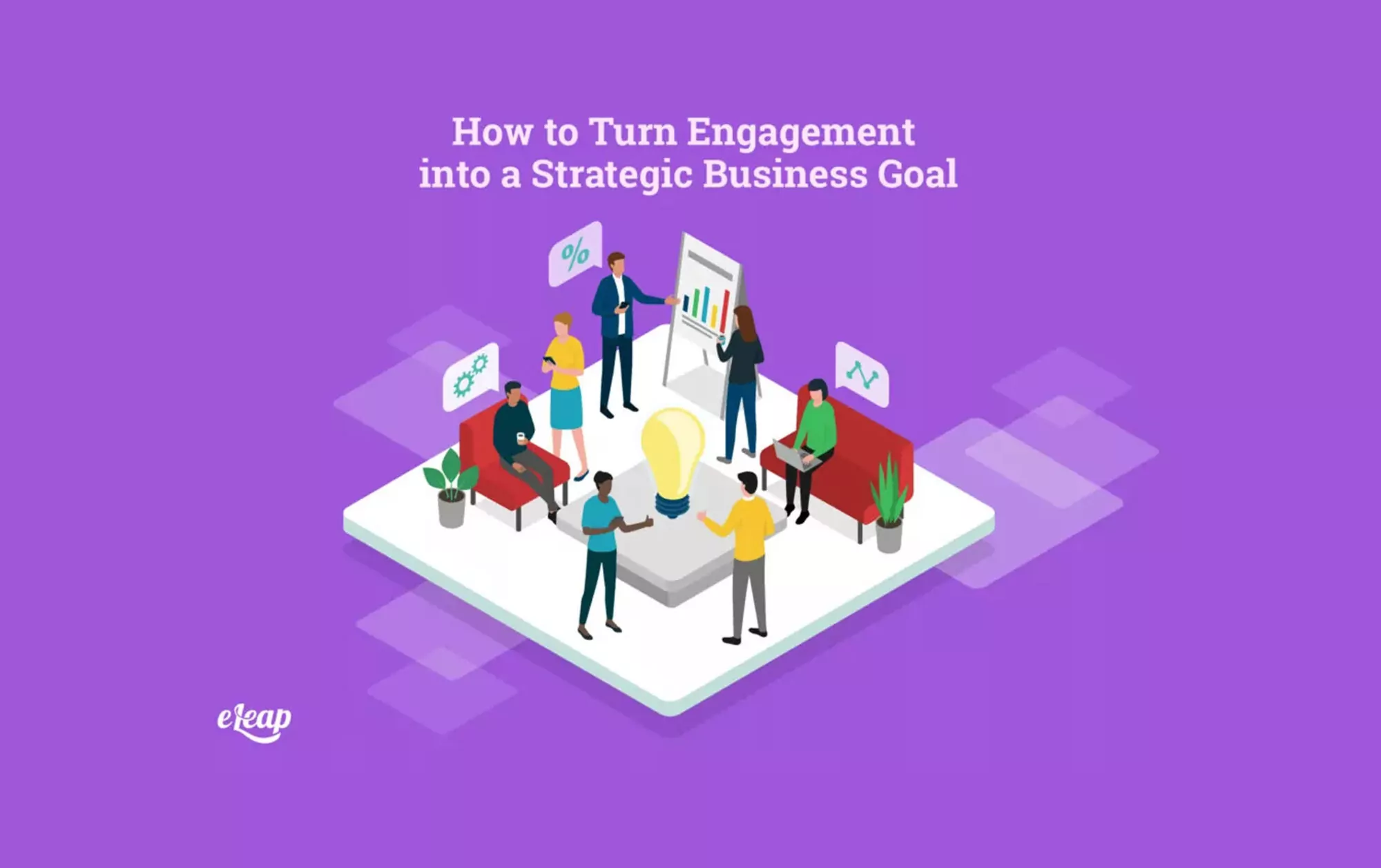How to Turn Engagement into a Strategic Business Goal

Businesses must attract top talent. However, to be successful, talent must also be retained. That can be challenging in an age when employees, fearful of their career prospects, often find they must change employers to advance to higher positions.
Employers must turn to a broad range of strategic tools to help improve retention. One of those is improving employee engagement – the benefits of better engagement are clear and include improved retention, better buy-in, higher productivity, reduced costs, and many more. Unfortunately, making measurable improvements in employee engagement is often more than a little challenging.
The answer for most organizations is to make engagement a strategic business goal. When transformed from “something HR handles” to a codified part of the organization’s overall mission, it becomes easier to gain buy-in from all stakeholders, as well as to implement procedures that increase it.

The Three Components of Engagement
To make engagement a strategic business goal, it must be understood. When considered as a cohesive whole, that can be challenging. However, when you break it down into its constituent parts, it becomes easier to understand and support through various initiatives. There are three components to engagement:
- Physical – In workplaces where engagement is high, employees exert significant physical energy in their daily tasks. This has the knock-on effect of raising the energy level for the entire department, even the entire organization.
- Emotional – This is perhaps the most obvious part of engagement. When employees are engaged, they feel inspired and challenged and approach their work with a sense of purpose because there is a feeling that their duties have significance to the organization’s mission.
- Cognitive – The final piece of the engagement puzzle is cognitive involvement. This can be measured in two ways. One of those is distraction – employees who are distracted are not engrossed in or even fully focused on their tasks. This is a sign of disengagement. Highly engaged employees, on the other hand, are fully engrossed in and focused on their tasks.
When you combine these three facets, you get employees who are highly engaged, energetic, focused, and vested in their role within the organization, as well as the organization’s success. How do you go about creating that sense of engagement, though?
Strategic Engagement: Tips to Help Set Goals
It can be daunting to contemplate improving engagement across the entire organization in one fell swoop. In fact, in many situations, that might not even be possible. The good news is that setting smaller, more achievable goals can help ensure that you’re able to reach larger goals.
Start Small
Reaching larger engagement-related goals can be hard, so focus on smaller, more achievable ones. For instance, rather than trying to raise engagement across the board, start with a handful of lower-performing teams instead. This provides you with several benefits. One of those is the ability to take on a more achievable challenge. Another is the confidence gained from reaching success here. Finally, it also gives you valuable feedback about what might work with other teams or departments as you broaden the scope of your efforts.
Find Inspiration
Take a look at what high-performing teams are doing right. What makes their members more engaged? What do those leaders do that others do not? Use the information you glean here to inform your efforts at improving engagement with those teams that are underperforming. Applying proven lessons learned from successful teams can provide a good starting point for improving engagement with other teams.
Identify Priority Issues
Work with the C-suite and other stakeholders to identify priority issues. Once those have been identified, work backward to determine how to achieve them and in what order they should be prioritized. Most businesses cannot take an all-encompassing approach here and instead must take a strategic approach beginning with the most mission-critical aspects first and then moving to lower-priority items.
Involve Employees
To be clear, employee engagement cannot be addressed without employee involvement. Handing down strategies from on high and expecting them to work often fails because there is a disconnect between what leaders assume is the problem and what employees see as the problem. Employees can provide a “boots on the ground” perspective that is often impossible for higher-ups to achieve. Whenever possible, involve employees in finding solutions to engagement-related challenges, even if that means encouraging anonymous feedback.
Skip the Initiative Aspect
It’s tempting to couch efforts to achieve goals in terms of “initiatives.” Do not do that with your engagement strategy. Why? Simply put, initiatives are often limited in terms of scope and duration, involve only a specific group of people, and have other limitations that can make it difficult to improve them throughout the organization. Engagement should be part of the culture, not something artificially fostered by an initiative.
Measure, Measure, Measure
Many organizations have achieved an improvement in engagement, only to later find that things have gone off course. The only way to avoid this is to continually measure your efforts and their results. You must measure not just engagement but also progress toward related goals and the outcomes of engagement-related efforts.
However, make sure that measurement occurs regularly. You should not measure every three months, then skip six months, and measure for two months. Set measurement periods and stick to them, so you gain an accurate idea of engagement within your organization.
Connect the Dots
You cannot simply preach engagement to your employees without also connecting the dots. What does engagement do for them? For their teams? For the organization as a whole? By connecting engagement to business results, it communicates to your team members the importance of engagement, as well as your commitment to maintaining it. It also provides a strong business case for stakeholders.
Engagement Doesn’t Have to Be Ephemeral
All too often, engagement feels ephemeral and fleeting. It doesn’t have to be that way. When you make it a strategic business goal and connect it to real-world results, it because simpler to achieve improvements and build a strong business case that proves to other stakeholders the value and importance of keeping engagement high.